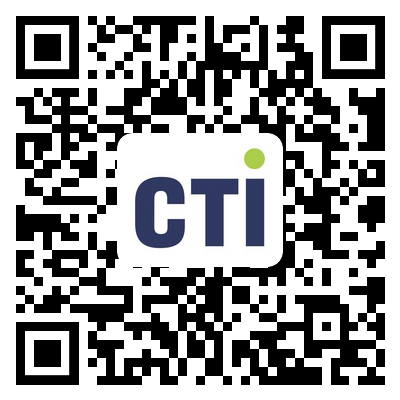On April 5, 2022, the California Office of Environmental Health Hazard Assessment (OEHHA) issued a notice to launch a second 15-day review of the proposed revision of the Proposition 65 Short Warning Label Notice published on December 17, 2021, starting from April 5, 2022. This notice initiates a public comment period beginning April 5, 2022, that will close on April 20, 2022. All written comments must be submitted to OEHHA by April 20, 2022, either electronically, by mail, or delivered in person.
The proposed revision is mainly based on the relevant comments received during the last proposed revision review. Compared with the last proposed revision, the proposed revision is updated as follows:
- The label size and package shape limitations on the use of the short-form warning were removed. This modification means that the short form can be used on product labels of any size, regardless of package size and shape.
- The requirement in Section 25602(a)(4) that the font type size must be the same as the largest type size providing consumer information was removed. The proposed amendments were modified to reference the Section 25601(c) to make clear the existing requirement “to render the warning likely to be seen, read, and understood by an ordinary individual under customary conditions of purchase or use”.
- For minor adjustments to the wording of the warning content, see the red part of the content to be revised below.
- Extend the proposed date of entry into force from one year to two years.
Some examples of the content of the on-product warning label in Proposition 65 are as follows:
|
Type |
Requirement |
|
on-product warning |
|
|
|
|
|
|
For consumer products, some examples of the content of the proposed revised Short-Form warning label are as follows:
|
Type |
Proposed Amendments |
|
Short-Form warning |
|
|
|
|
|
|
|
|
|
Background
Proposition 65, more formally known as the Safe Drinking Water and Toxic Enforcement Act of 1986, Effective Date: November 1986.
Requirement: (1): Prohibition On Contaminating Drinking Water With Chemicals Known to Cause Cancer or Reproductive Toxicity. (2) A business is required to warn a person before "knowingly and intentionally" exposing that person to a listed chemical.
Substances: The Prop 65 List was first published in 1987 and is updated at least once a year. To date, nearly a thousand substances have been included in this list. No, the prop 65 does not set limits for the listed substances in a certain type of product. Since the substance concentration is not the only factor that determines whether the exposure risk will occur, the limit is not sufficient to determine whether a warning is required.
Enterprise Response: Enterprises should focus on the substances involved and newly added substances in past judgments and settlement cases. The main substances involved in electrical and electronic products include lead, cadmium, phthalates, and bisphenol During 2021, the Proposition 65 List updated frequently. It was updated 4 times in March and December 2021, including 8 substances. The new substances are the substances that relevant law enforcement officials focus on, and the follow-up will also be a high risk of litigation. The 8 substances have a wide range of uses and involve many products, so they have a significant impact on related products exported to the United States.
|
Substance |
CAS No. |
Main uses |
|
Molybdenum trioxide |
1313-27-5 |
Mainly used as the raw material for making molybdenum and molybdenum compounds, as a catalyst in the petroleum industry. It can be used as additive flame retardant with dual functions of flame retardant and smoke suppression. It can also be used for enamel glaze pigments and medicines, as well as for spectral analysis reagents. |
|
Indium tin oxide |
50926-11-9 |
Mainly used in the production of liquid crystal display, flat panel display, plasma display, touch screen, electronic paper and other applications, but also often used in organic light-emitting diodes, solar cells, antistatic coating and EMI shielding transparent conductive coating. |
|
tetrahydrofuran |
109-99-9 |
Raw material for spandex synthesis reaction, used as solvent, raw material for pharmacy, organic synthesis, etc. |
|
2-ethylhexyl acrylate |
103-11-7 |
Used in polymer monomers, plasticizers, synthetic fiber fabric processing, adhesives, coatings, plastic modification, etc. |
|
methyl acrylate |
96-33-3 |
Used as a polymer monomer for processing coatings, textiles, paper, adhesives, etc. |
|
trimethylolpropane triacrylate(technical grade) |
—— |
Used in coatings, inks, toners, adhesives, thermoplastics manufacturing, rubber, leather, textiles, paper and other products. |
|
Perfluorooctane sulfonic acid (PFOS) and its salts and transformation and degradation precursors |
—— |
Used as waterproof agent, oil repellent, dustproof agent and anti-fat agent (such as fabric, leather, paper, packaging, fur carpet and carpet), surface active agent (such as fire extinguisher foam and coating additive), pesticide and insecticide. |
|
Perfluorononanoic Acid (PFNA) and its Salts |
—— |
Used in processing aid for fluoropolymer manufacture/lubricating oil additive/surfactant for fire extinguishers /cleaning agent/textile antifouling finishing agent/polishing surfactant/waterproofing agents and in liquid crystal display panels. |
NG28 Services
In order to help enterprises quickly respond to the control requirements of Proposition 65, NG28 has launched a complete set of Proposition 65 new substances and litigation high-risk substances testing services, covering all new substances in 2021 and litigation high-risk substances in previous years. NG28 has many advanced equipment and scientific experiments Laboratory information management system, accurate and reliable test data, international credibility of test reports, service network all over the world, designated cooperative laboratories for many first-line brands. NG28 technical expert team has rich practical experience, can provide professional, rapid and comprehensive for Proposition 65. NG28 can provide one-stop service to help you put your products on the US market smoothly.











































 粤公网安备 44030602000441号
粤公网安备 44030602000441号 